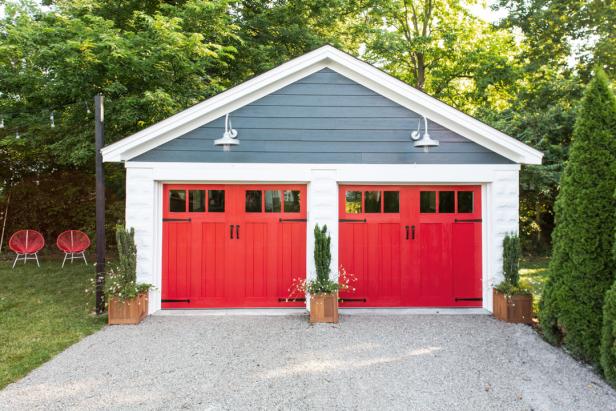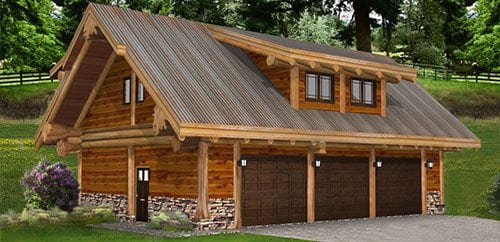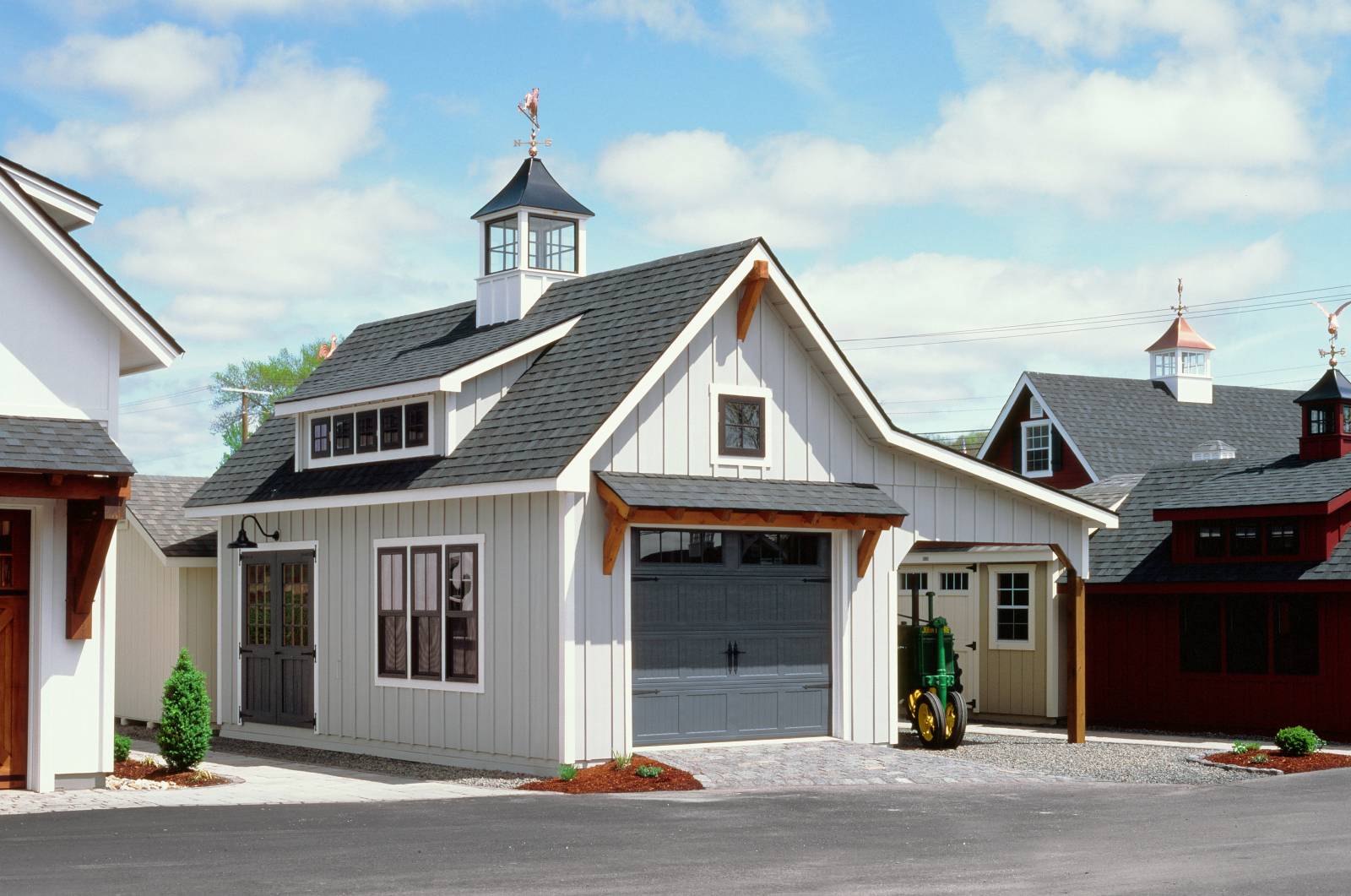
It's a matter personal preference to pick the right garage door style for your home. You should choose a style that compliments your home's design. The material you choose should also suit your location. A door that is capable of keeping your garage insulated will be ideal if you live somewhere with cold climates.
Raised panel doors offer a modern option. This type of door is available in a variety of colors and styles. You can also add decorative hardware. Decorative hardware can bring a modern touch to your home. However, this style can be expensive. It is a smart move to think about other more affordable options.
Victorian homes are characterised by intricate details. Homes of this style often have rich and deep colors. These colors are often used throughout the home. You can, for example, use the same shade for your window boxes or other fixtures. A shade that matches the landscape's hue will create an overall harmonious effect.

Tudor homes are characterized by late Medieval or early Renaissance styles. These styles usually include stucco exteriors. A solid-looking garage is a good choice if you have a Tudor-style house. Rather than a slab door, these homes are better suited for an overlay door.
Craftsman-style homes feature triangular, gable roofs. There is also a covered front porch and entryway. These homes were very popular in the 1900s. These homes have decorative hardware and pillars at the entrance. Many homes have traditional-looking garage doors. Adding this type of door to your Craftsman home will make it stand out from the rest.
You can choose from wood, steel or aluminum for traditional garage doors. Some homeowners prefer the warmth and rustic appeal of wood while others prefer the strength of steel. You can paint each of these doors to match your home's colors.
Whether you're building a new home or renovating an existing one, your garage can make a big difference in your curb appeal. If you have the right garage doors, your home will be beautiful for many years.

The most common styles of garage doors are contemporary, traditional, and raised panel. Each option can be matched to a variety of homes. Contemporary doors are made of steel or glass, and available in many different finishes. Modern styles tend to focus on clean lines and minimal visual distractions. On the other side, traditional garage door styles are often solid in color.
It can be quite fun choosing the right garage entrance for your home. There are many options and most can be tailored to your budget. A little research will help you find the best garage door for your house. After you have chosen the style that you prefer, you can move on to choosing the finish.
Door can not only increase curb appeal but can also help improve your home’s energy efficiency. Modern doors are insulated which can help keep your home cool and warm in the summer. Double-paned glass panels are also an option for those who want extra security. You can enjoy natural sunlight while your garage is insulated.
FAQ
Why should I remodel rather than buying a completely new house?
It's true that houses get cheaper yearly, but you're still paying for the same square footage. You may get more bang for your buck but you still have to pay for extra square footage.
It's cheaper to maintain a house without much maintenance.
Remodeling can save you thousands over buying a new house.
Remodeling your current home can help you create a unique space that suits the way you live. Your home can be made more comfortable for your family.
What are the top expenses associated with remodeling a Kitchen?
Planning a kitchen renovation can be costly. These include demolition, design fees, permits, materials, contractors, etc. Although these costs may seem relatively small, if you take them all together, they can quickly add up. But when you combine them, they quickly add up to be quite significant.
The most expensive cost is probably the demolition. This includes removing cabinets, countertops and flooring. You will then need to remove the insulation and drywall. You must then replace these items with new ones.
The next step is to hire an architect to design the space. The permits will be required to ensure the project complies with building codes. The final step is to find someone to carry out the actual construction.
The contractor must be paid once the job has been completed. It is possible to spend anywhere from $20,000 up to $50,000 depending on the size and complexity of the job. You should get estimates from multiple contractors before you hire one.
Plan ahead to cut down on some of these costs. You might be able negotiate better materials prices or skip some work. Knowing what is required will allow you to save both time and money.
People often try to install their cabinets themselves. This will save them money as they won't need to hire professional installation services. It is often more expensive to have professional installation services. The time it takes to complete a job can be completed by professionals in half the time.
Another way to save money is to buy unfinished materials. You must wait until the cabinets are fully assembled before purchasing pre-finished material. You can use unfinished materials immediately if you buy them. And if something doesn't turn out exactly as planned, you can always change your mind later.
Sometimes it is not worth the hassle. It is important to plan your home improvement projects in order to save money.
What should I do to my existing cabinets?
It all depends on whether or not you plan to rent your home out. You'll need to remove the cabinets and refinish them if you plan to sell. This gives buyers the illusion that they are brand new, and allows them to envision their kitchens once they move in.
The cabinets should be left alone if you intend to rent your home. Many tenants are unhappy with the mess left behind by former tenants.
You can also consider painting the cabinets to make them look newer. It is important to use a high quality primer and paint. Low-quality paints can become brittle over time.
What is the difference between a remodel and a renovation?
A remodel is major renovation to a room, or a portion of a rooms. A renovation is a minor change to a room or a part of a room. Remodeling a bathroom is a major job, but adding a faucet to the sink is a minor one.
Remodeling involves replacing a complete room or a part of a entire room. A renovation involves only changing a portion of a room. A kitchen remodel might include the replacement of countertops, sinks as well as appliances, lighting, and other accessories. But a kitchen update could include painting the wall color or installing a new light fixture.
What order should you renovate your house?
First, the roof. The plumbing follows. The electrical wiring is third. Fourth, the walls. Fifth, the floor. Sixth, the Windows. Seventh, the door. Eighth, the kitchen. Ninth, the bathrooms. Tenth, the garage.
Once you've completed these steps, you can finally get to the attic.
Hire someone to help you if you don't have the skills necessary to renovate your home. It takes patience, time, and effort to renovate your own home. It will also cost money. You don't need to put in the effort or pay the money.
Renovations aren't cheap, but they can save you tons of money in the long run. Plus, having a beautiful home makes life better.
Is $30000 too much for a kitchen redesign?
A kitchen remodel costs anywhere from $15000 up to $35000 depending on what you are looking for. A complete kitchen remodel will cost you more than $20,000. You can get a complete kitchen overhaul for as little as $3000 if you just want to replace the countertops or update your appliances.
Full-scale renovations typically cost between $12,000 and $25,000. There are ways to save money but not sacrifice quality. One example of this is installing a sink, instead of replacing the old one. It costs about $1000. You can also buy used appliances at half the cost of new ones.
Kitchen renovations are more time-consuming than other types of projects. Plan accordingly. You don't want to start working in your kitchen only to realize halfway through that you're going to run out of time before completing the job.
Start early. Begin to look at your options and get quotes from several contractors. Then narrow down your choices based on price, quality, and availability.
Once you have contacted a few contractors, ask them for estimates and then compare prices. The lowest-priced bid isn't always the best choice. It is important to find someone who has similar work experience and will give you a detailed estimate.
Remember to include all the extras when calculating the final cost. These extras could include labor and material costs, permits, or other fees. You should be realistic about what you can spend and stick to your spending budget.
Be honest if you are unhappy with any bid. Tell the contractor why you don't like the initial quote and offer another chance. Don't let pride stand in the way of saving money.
Statistics
- According to a survey of renovations in the top 50 U.S. metro cities by Houzz, people spend $15,000 on average per renovation project. (rocketmortgage.com)
- 57%Low-end average cost: $26,214Additional home value: $18,927Return on investment: (rocketmortgage.com)
- 5%Roof2 – 4%Standard Bedroom1 – 3% (rocketmortgage.com)
- 55%Universal average cost: $38,813Additional home value: $22,475Return on investment: 58%Mid-range average cost: $24,424Additional home value: $14,671Return on investment: (rocketmortgage.com)
- $320,976Additional home value: $152,996Return on investment: 48%Mid-range average cost: $156,741Additional home value: $85,672Return on investment: (rocketmortgage.com)
External Links
How To
How can you budget for a bathroom?
A remodeling project's most important aspect is making sure you can afford it. It is impossible to expect to pay it off later if it is not possible for you now.
You need to be able to budget and plan for bathroom remodeling. Bathroom remodeling is expensive. Many factors influence its cost.
Labor is the largest expense. Prices for labor vary depending on how big the job is and whether you are hiring a professional contractor or DIYer. Professional contractors usually charge more per hour than a DIYer because they have experience and expertise.
Another big expense is materials. Prices per square foot can vary depending upon the type of material.
Last but not least, let's not forget about the cost of energy. This includes both electric and gas bills. Peak demand times are when energy prices tend to increase.
The time taken to complete the project is another factor to consider. Bathroom renovations generally require a lot of time and patience. Some projects take weeks while others take months.
Beyond these three categories, there are many smaller items, such as paint, wallpaper or flooring, that add to the overall cost of the project.
Here are some tips for bathroom remodeling projects:
-
You should determine your budget before you start any remodeling project. It doesn't matter if you think you can afford it or not. It is important to establish a realistic budget so that you can see where your finances are at all times.
-
Plan Ahead: If you can, plan for your bathroom remodel to take place in the off-season. You'll be able to save money heating and cooling your home in the winter months due to lower energy usage. You might even want to plan your remodel in the evening when less people use the toilet.
-
Take a look at other vendors - Now that you have decided on a budget, it's time to begin looking around for possible vendors. There are many options for you. These include local businesses, online sellers, friends, family, and even relatives who may be willing or able to work with your project.
-
Select an Estimator - After you have identified potential vendors, contact each one to obtain estimates. In order to ensure that you get competitive pricing, it is important to obtain multiple quotes.
-
Get Multiple Estimates. - After getting your initial estimates you can compare them against each another to determine which vendor offers the best price. Once you have found the right vendor, you can ask them to give you a written estimate.
-
You must include all costs when preparing estimates. Particularize on any fees, taxes, permits or other requirements that may be applicable to your area.
-
Do not overlook the small details - When planning your bathroom remodel, it is important to pay attention to the smallest details. Are you looking for a new toilet, or do you just need one? Is there space for a curtain rod to hang from the shower? These changes could easily increase the project cost.
-
Take into account insurance - It is important that you check with your insurance company about the extent of your bathroom remodel to ensure you have sufficient coverage. You could end up paying more if you don't.
-
Hire a Professional - Once your bathroom remodel is complete, you should always hire a professional to put in the final fixtures. Although you may be capable of doing the job yourself it is easier to hire someone to do it correctly.